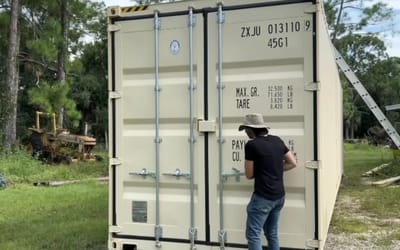Astronomers claim to have 'strongest evidence' yet of potential life beyond Earth
- A group of astronomers has discovered new signs of life
- They found the same compounds present in the Earth’s atmosphere
- The discovery shows almost definite signs of marine life
Published on Apr 18, 2025 at 9:24 AM (UTC+4)
by Daisy Edwards
Last updated on Apr 18, 2025 at 6:09 PM (UTC+4)
Edited by
Kate Bain
Following a recent discovery, a group of astronomers claim to have the ‘strongest evidence’ yet of signs of life beyond Earth.
Scientists using the James Webb Space Telescope (JWST) have discovered a new planet which seems to have the chemical fingerprints of two compounds that could be produced by living things.
The planet was first discovered in 2015 and is found in an area where liquid water could actually exist.
More recently, astronomers found water vapor signs in the new planet’s atmosphere and this made the scientists think: could there be life on this planet?
EXPLORE SBX CARS – Supercar auctions starting soon powered by Supercar Blondie
The ‘strongest evidence’ of life yet
Ten years ago astronomers discovered a brand new planet called K2-18 b through the James Webb Space Telescope (JWST) and it could change the future of space exploration forever.
The astronomers discovered that there are two compounds found on the planet that could be signs of life outside Earth – because they are two compounds in the atmosphere on our home planet too.
“These are the first hints we are seeing of an alien world that is possibly inhabited,” University of Cambridge Nikku Madhusudhan said.

Astronomers believe they have found living beings
Looking closer in the James Webb Space Telescope more recently, Madhusudhan and his team found signs of water vapor, carbon dioxide and methane, all the compounds found in Earth’s atmosphere.
The most shocking and exciting discovery by the Astronomers is actually the existence of a very small amount of dimethyl sulphide (DMS), which is produced exclusively by marine life like phytoplankton, which was the first type of life we had on earth.
There was also a really tiny amount of dimethyl disulphide (DMDS) which comes from lots of living things, so this discovery could change everything as we know it, maybe it’s not life as advanced as humans, but it is still the strongest evidence of signs of life.
This could be a massive step forward for space exploration and may confirm a lot of people’s theories that we may not be alone in the universe.
DISCOVER SBX CARS: The global premium car auction platform powered by Supercar Blondie
Daisy Edwards is a Content Writer at supercarblondie.com. Daisy has more than five years’ experience as a qualified journalist, having graduated with a History and Journalism degree from Goldsmiths, University of London and a dissertation in vintage electric vehicles. Daisy specializes in writing about cars, EVs, tech and luxury lifestyle. When she's not writing, she's at a country music concert or working on one of her many unfinished craft projects.




